Background
Bob Cobbing was born on July 30, 1920, in Enfield, United Kingdom. He was brought up within a close religious group, the Plymouth Brethren. His family ran a sign-writing business.

1966
Arlington Mill, Bibury, Gloucester, United Kingdom
Dom Sylvester Houédard, Pete Brown, Bob Cobbing and Ernst Jandl performing the Kurt Schwitters sound poem Fury of Sneezing.
1972
Bob Cobbing, educator, painter, publisher, author, poet.
1985
London, United Kingdom
Bob Cobbing and Maggie O'Sullivan reading from O'Sullivan's A Natural History in 3 Incomplete Parts at the London Musicians Collective.
1995
The Victoria, Mornington Place, London, United Kingdom
Bob Cobbing and Peter Manson, Writers Forum Workshop.
Bob Cobbing and Jennifer Pike at a poetry festival in the mid-1960s.
Parsonage Ln, Enfield EN1 3SS, United Kingdom
Bob Cobbing studied at Enfield Grammar School.
Bob Cobbing was an active member of the Poetry Society.













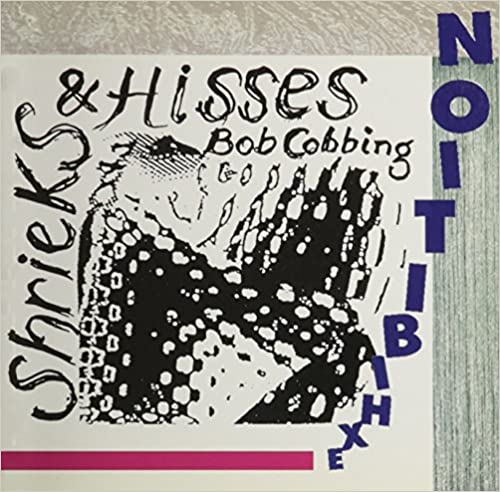
(The works of Bob Cobbing invite participation. His work: ...)
The works of Bob Cobbing invite participation. His work: the visual, the written, the performed, -solo, duo, quartet; his voice, flexitone, bird whistle or drum accompanied, the physicality of Cobbing in performance, his expression, his mouth, his apparel are a collaboration, his perceived antennae, those who pick up his page, walk into his performance.
https://www.amazon.com/Shrieks-Hisses-Collected-Poems-Sixteen/dp/1901538265/ref=sr_1_2?dchild=1&keywords=bob+cobbing+Shrieks+and+Hisses%3A+Collected+Poems&qid=1589535344&s=books&sr=1-2
1999
educator painter publisher author poet
Bob Cobbing was born on July 30, 1920, in Enfield, United Kingdom. He was brought up within a close religious group, the Plymouth Brethren. His family ran a sign-writing business.
Educated at Enfield Grammar School, Bob Cobbing trained as an accountant, and then as a schoolteacher at Bognor Training College. He received a teaching certificate in 1949.
Bob Cobbing began his career as an accountant, civil servant (1937-1941), and farmer (1942-1943) before World War II, switching to teaching art, literature, and music in Swindon, England (1944-1947) and London (1949-1964). In 1942, he produced his first monotype poems with typewriter and office duplicator.
He began his life-long engagement with arts organizing in the mid-1950s, with Group H and And magazine in Hendon, which grew into Writers' Forum. After leaving teaching in 1964, he managed the famous underground shop Better Books in London's Charing Cross Road, venue of many readings and happenings of the "bomb culture," as his colleague and early Writers' Forum poet Jeff Nuttall called those heady days. The Bookshop, where he worked until 1967, was well known for carrying underground literature and for helping to publish the early works of Allen Ginsberg and P. J. O'Rourke.
In the 1970s, he convened Poets Conference, which campaigned for the modernization of the post of Laureate.
Between 1963 and 2002 Writers' Forum published more than 1,000 pamphlets and books, many of them his own work, but he was also generous as a publisher to younger writers, such as Lee Harwood and Maggie O'Sullivan. He issued texts by John Cage and Allen Ginsberg, and by fellow concrete poets, such Frenchman Pierre Garnier and Italian Arrigo Lora-Totino, both of whom were guests at the workshop in the 1990s.
Cobbing's entry into the world of concrete poetry came in 1964, with the writing of his alphabetical sequence ABC In Sound. Although he claimed the texts derived from auditory hallucinations during a bout of flu, its use of puns, foreign languages, palindromes, and technical jargon suggests elaborate craftsmanship. The text beginning: "Tan tandinanan tandinane" already suggests a chanting performance, which it received when Cobbing was given access to the BBC Radiophonic Workshop with its battery of special effects.
Owning the means of production, the office duplicator and the photocopier, meant that Cobbing could conflate the processes of writing, design, and printing. Performing regularly meant that he could heal the split in concrete poetry between those who presented silent icons, most famously Ian Hamilton Finlay, and those who developed the art of pure sound, such as Henri Chopin. Cobbing's anagrammatic title Sonic Icons was emblematic.
As his texts became progressively freer, any mark - whether letter-shape, lip imprint, or inkblot - was readable as a sign on the page. Shape and texture suggested vocalization and sound to Cobbing and the performers he increasingly worked with during the 1970s, such as musicians Paul Burwell and David Toop, and poets Paula Claire and Bill Griffiths.
Moaning, sighing, shouting, even sneezing, became as common as words or phonetics. In recent years, new collaborators became crucial to his work: the anarchic thrash noise ensemble of Bird Yak (Hugh Metcalfe on guitar and amplified gas mask, veteran improviser Lol Coxhill on saxophone, and his wife Jennifer, dancing); or the extraordinary series of 300 booklets written with Lawrence Upton, called Domestic Ambient Noise, across which the two writers processed and re-arranged the other's work.
Aesthetically uncompromising, and repellent to some, Cobbing's language experiments could also be fun - as his work with schoolchildren testified. He remained alert to the weird linguistic detritus he found everywhere.
Bob Cobbing became subsequently known, above all, for his participation in all the significant international festivals on sound poetry as well as at the most important exhibitions of concrete, visual and experimental poetry. On stage he tried out different possibilities of "body-generated poetry"; his poetry actions were a "ballet" of the entire body.
Publishing dozens of poetry collections in his lifetime, some of his more recent verse works include Circuit (1998), Voices (1999), and Shrieks and Hisses: Collected Poems (1999). Many of Cobbing's best-known poems were collected in Bill Jubobe (1976) and Bob Jubile (1990), while the third collection of his most important verses was planned for publication in 2003. Cobbing also edited, with Peter Mayer, the study Concerning Concrete Poetry (1976).
Bob Cobbing became a senior and major exponent of the international concrete poetry movement in Great Britain. In 1973, he received C. Day-Lewis Fellowship. His large body of work, in comparison with that of other poets in the field, contains the published texts that are freestanding visual poems and scores for vocal performance as sound poems at the same time. He was one of the founders of the Association of Little Presses and Writers' Forum.
(The works of Bob Cobbing invite participation. His work: ...)
1999Bob Cobbing's work drew on elements of concrete and sound poetry; he foregrounded language as material, as a sign or mark, while developing sound as an element of non-semantic meaning. Cobbing wrote of his practice in Some Statements on Sound Poetry: "Gone is the word as word, though the word may still be used as sound or shape. Poetry now resides in other elements."
Interested in going beyond the limitations of the printed word, Cobbing explored the relationship between language, art, and music. He experimented with visual poetry, sometimes using shapes and patterns rather than words to blend art and poetry, and experimenting with type in an attempt to convey visceral meanings.

Bob Cobbing was an active member of the Poetry Society. He served on the council of the Poetry Society, during a turbulent period in its history marked by poetry wars between the mainstream and experimentalists like himself.
The Poetry Society , United Kingdom
Bob Cobbing was a founding member and vice president of the Association of Little Presses, a self-help organization for poet-publishers.
Association of Little Presses , United Kingdom
1966
Bob Cobbing was a dynamic gentleman with a sonorous voice.
In 1963, Bob Cobbing married Jennifer Pike. He had three sons and two daughters from previous marriages.
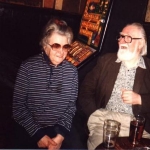
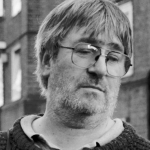
Lawrence Upton was a poet, graphic artist, sound artist, and curator. Much of Upton's practice was rooted in and birthed from, collaboration and multi-disciplinarity. His work, both as an individual and in partnership, probed the relationship between sound, text, image, and performance, exploring and extrapolating new mental landscapes and methodology beyond the existing cannon. He was the director of the Writers' Forum. Bob Cobbing wrote 300 booklets, Domestic Ambient Noise, with Lawrence Upton.
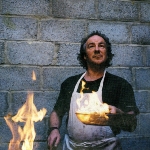
Paul Burwell was a musician and percussionist, who worked in the fields of free improvisation and experimental art.
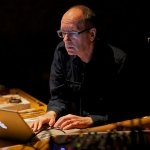
David Toop is a musician and author, who has worked in many fields of sound art and music since the late 1960s. He is a professor of audio culture and improvisation at the London College of Communication.
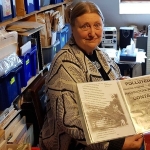
Paula Claire has been exploring the possibilities of art since the 1960s. With poetry informing all her work, she uses performance, sound, visual art, and objects to create multiple new meanings and connections.
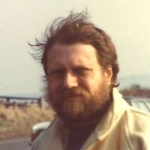
Brian William Bransom Griffiths, known as Bill Griffiths, was a poet, Anglo-Saxon scholar, book designer, small press publisher, biker, houseboat owner, pianist, archivist and social historian who late in his career moved from London to North East England where he reinvigorated the study of the region's dialect.
